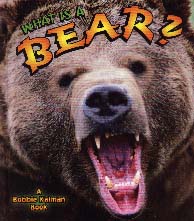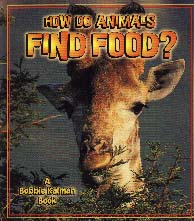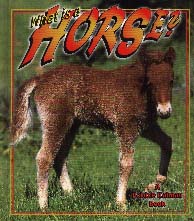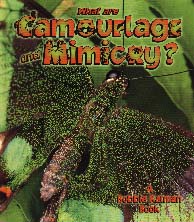| ________________
CM . . .
. Volume VIII Number 7 . . . . November 30, 2001
exerpt:
These excellent informational interest books, produced under the editorship of Bobbie Kalman, are useful additions to any book collection. Each book covers a subject thoroughly, with chapters such as "Who stole my clothes?" (What are Camouflage and Mimicry?) and "Using echolocation to find food" (How Do Animals Find Food). Humans aren't forgotten in How Do Animals Find Food? which provides information on vegetarianism as well as how the reader can help those who don't have enough food. Website addresses direct the reader to other sources for further information. The consequences of human encroachment and activity upon the natural world are also explained. Organized in a standard fashion, children will be able to find information through the table of contents or index. New or unusual words are explained in the glossary ("Words to Know"). Each chapter is replete with pictures and/or drawings with precise explanations to augment the sub-topics. Photographs are brightly coloured close-ups that are well-executed. Drawings are highly accurate. These books will be sure to inform and fascinate children. They are useful both as reference books and as general interest books. Highly Recommended. Harriet Zaidman is a teacher-librarian in Winnipeg, MB.
To comment on this
title or this review, send mail to cm@umanitoba.ca.
Copyright © the Manitoba Library Association. Reproduction for personal
use is permitted only if this copyright notice is maintained. Any other
reproduction is prohibited without permission.
Published by
NEXT REVIEW |TABLE OF CONTENTS FOR THIS ISSUE - November 30, 2001.
AUTHORS
| TITLES | MEDIA REVIEWS
| PROFILES
| BACK ISSUES
| SEARCH | CMARCHIVE
| HOME
|



